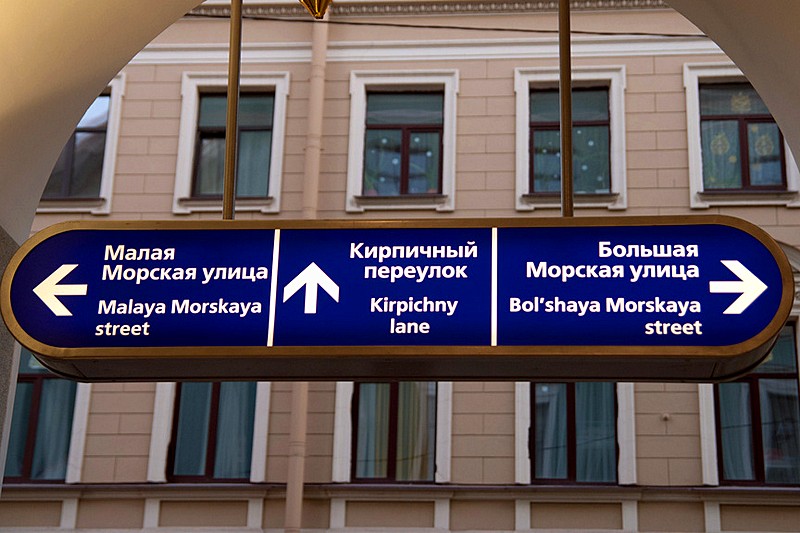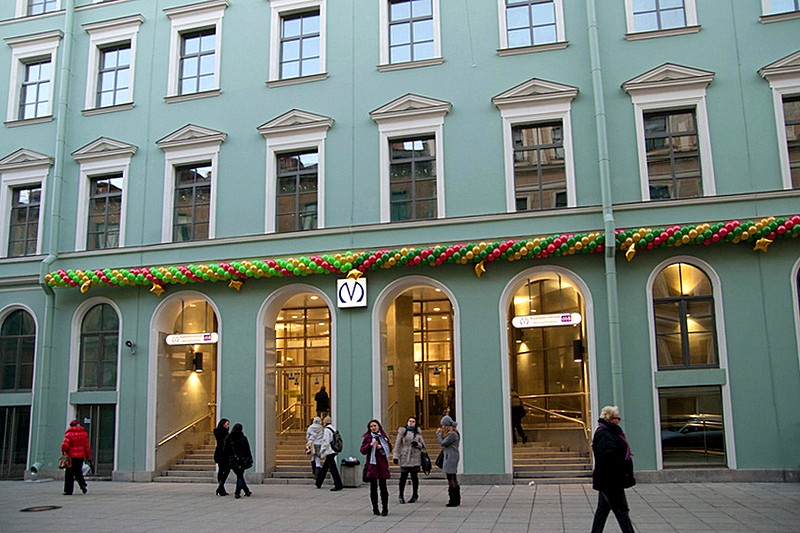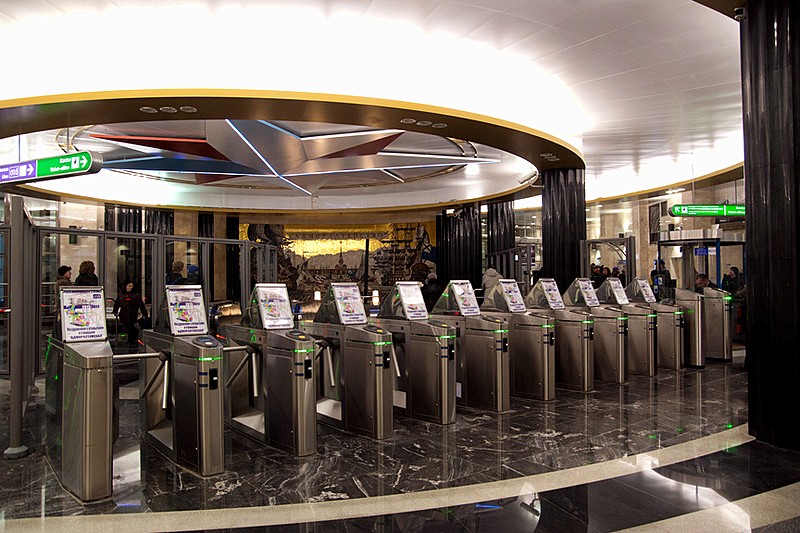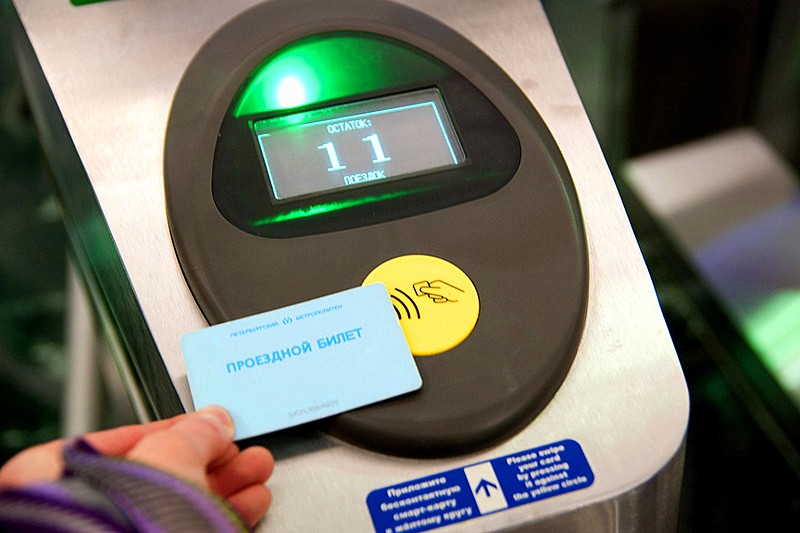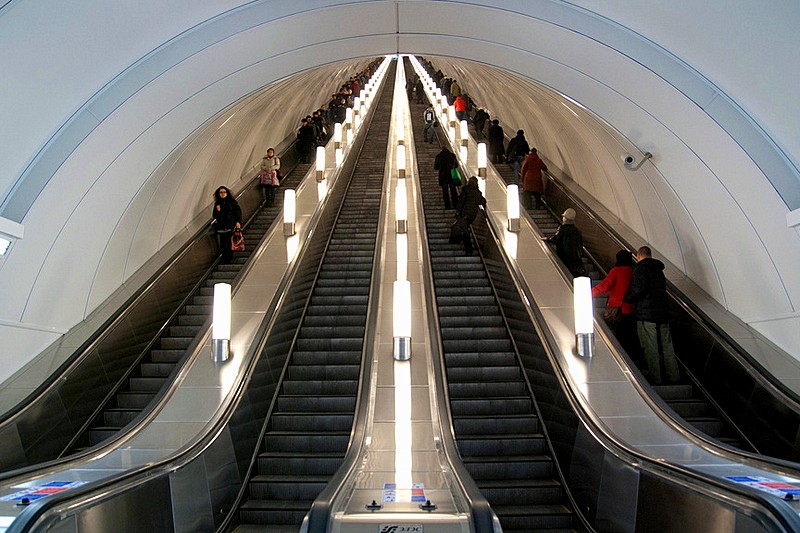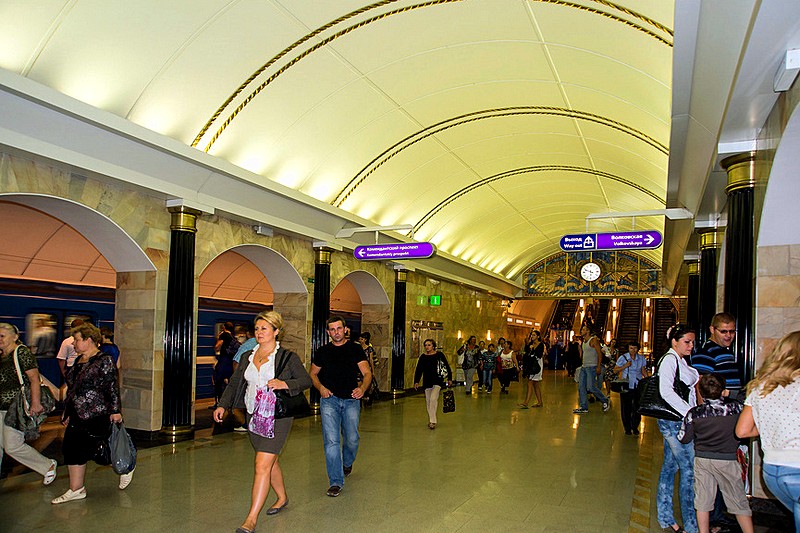St. Petersburg Metro
St. Petersburg's metro is perhaps not quite as majestic as Moscow's, but architecturally it's still a cut above nearly any other public transport system in the world. It is also the world's deepest subway, so be prepared for vertiginous views from the top of the escalator.
The system is also remarkably efficient. During the day, trains arrive every 2-3 minutes, with slightly longer waiting periods early in the morning and late at night. On average, the stations open at about 5:45am and close between midnight and 0:30am You can transfer from one line to the other until 0:15am.
Tickets
The fare for a single journey to anywhere in the city is around $1. St. Petersburg's metro still uses a system of tokens ("zheton") the size of larger coins. These can be bought from the cashier windows operating in every station vestibule - the easiest way to make yourself understood is just to pass through exact change and/or use your fingers to signal the number of tokens you require. In theory, you need to buy separate tokens for larger baggage, but this rule is rarely enforced.
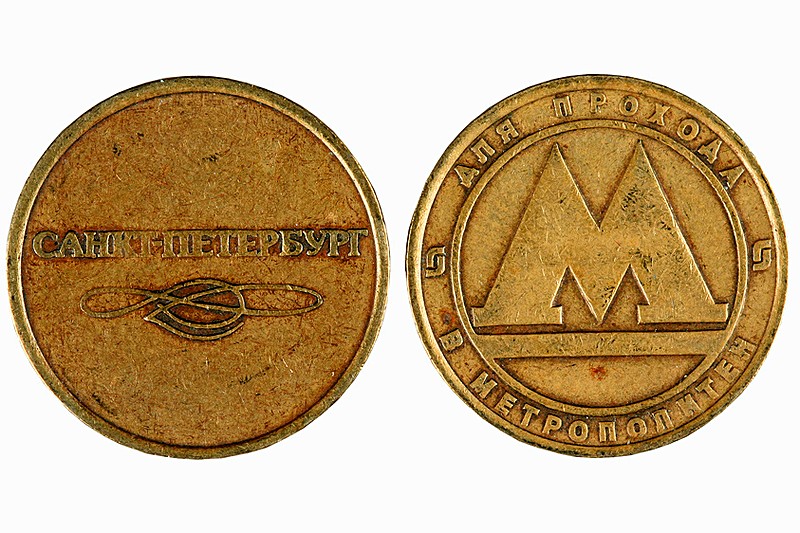
There are also vending machines of two types in nearly all stations. The smaller orange machines allow you only to insert a set denomination of note (currently 100 rubles) and obtain a set number of tokens plus change. If no light is showing, the machine is not working. The second type, which are computerized with a touchscreen, allow you to choose the number of tokens you require, pay with different denominations of note or coin, and can also be used to buy or top up cards.
The first plans to build a metro in St. Petersburg were drawn in 1899, but were not implemented due to the outbreak of WWI and then the Revolution of 1917. In 1941, 8 years after the Moscow metro was opened, building was started on the Leningrad metro, but a few months later the U.S.S.R. was forced to enter WWII. After the war the construction work resumed and the first metro line (from Avtovo to Ploschad Vosstania) was opened on November 15, 1955. Since then the metro network has grown to five lines with an average of 1.9 km (1.19 miles) between its 67 stations.

